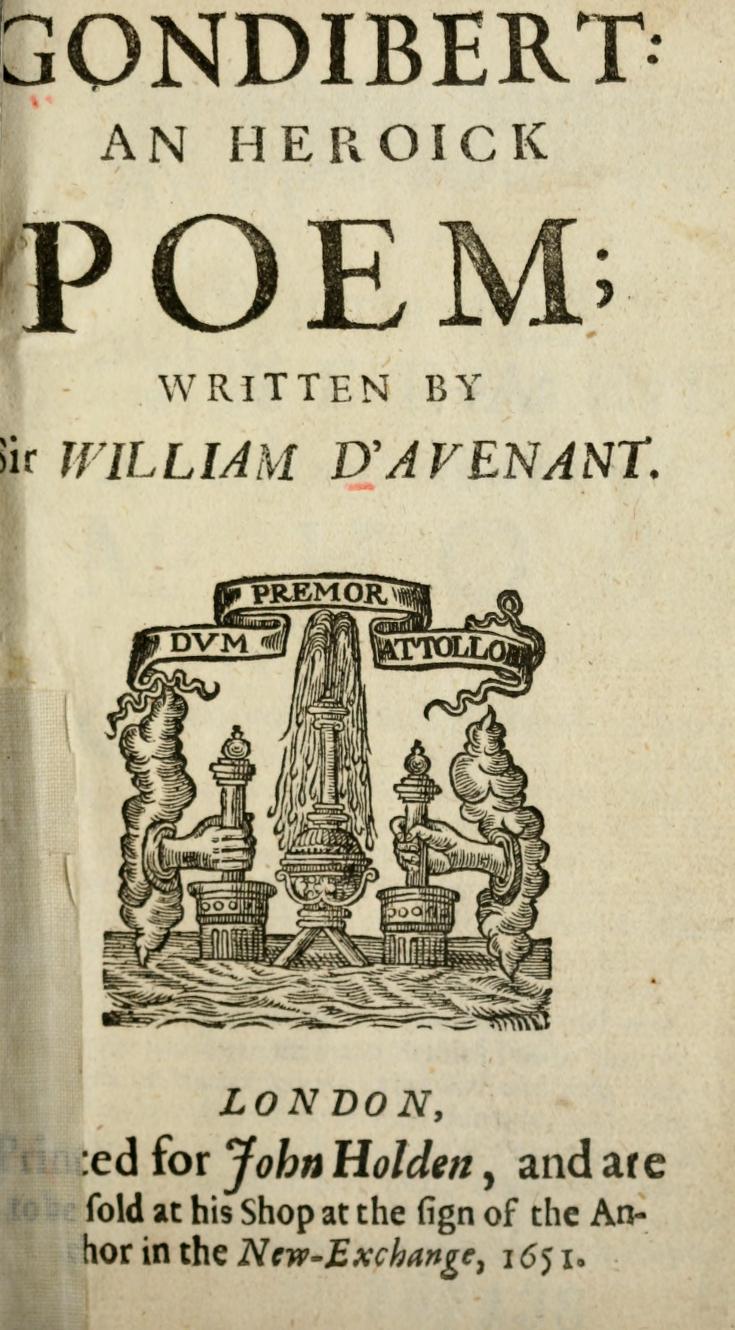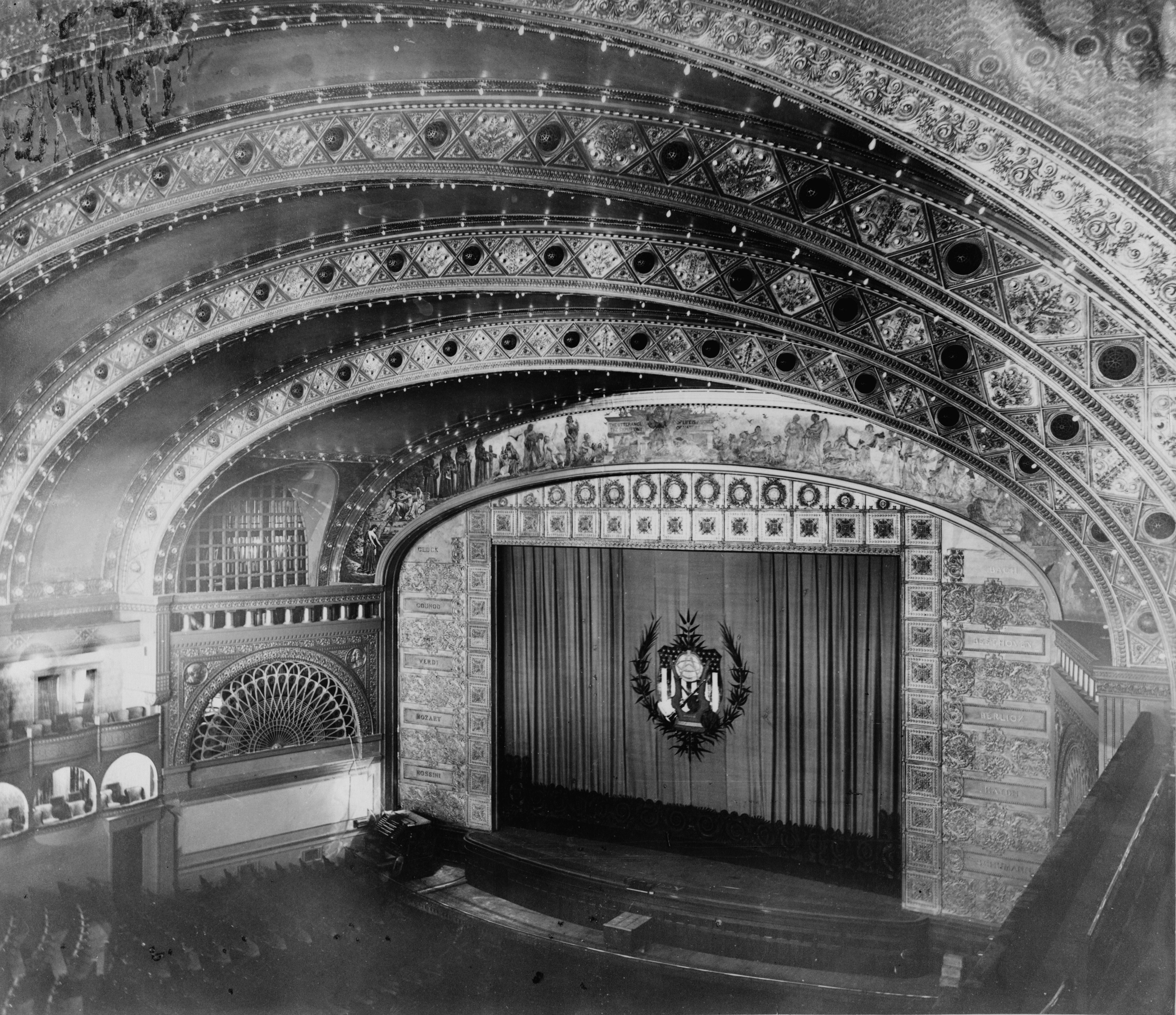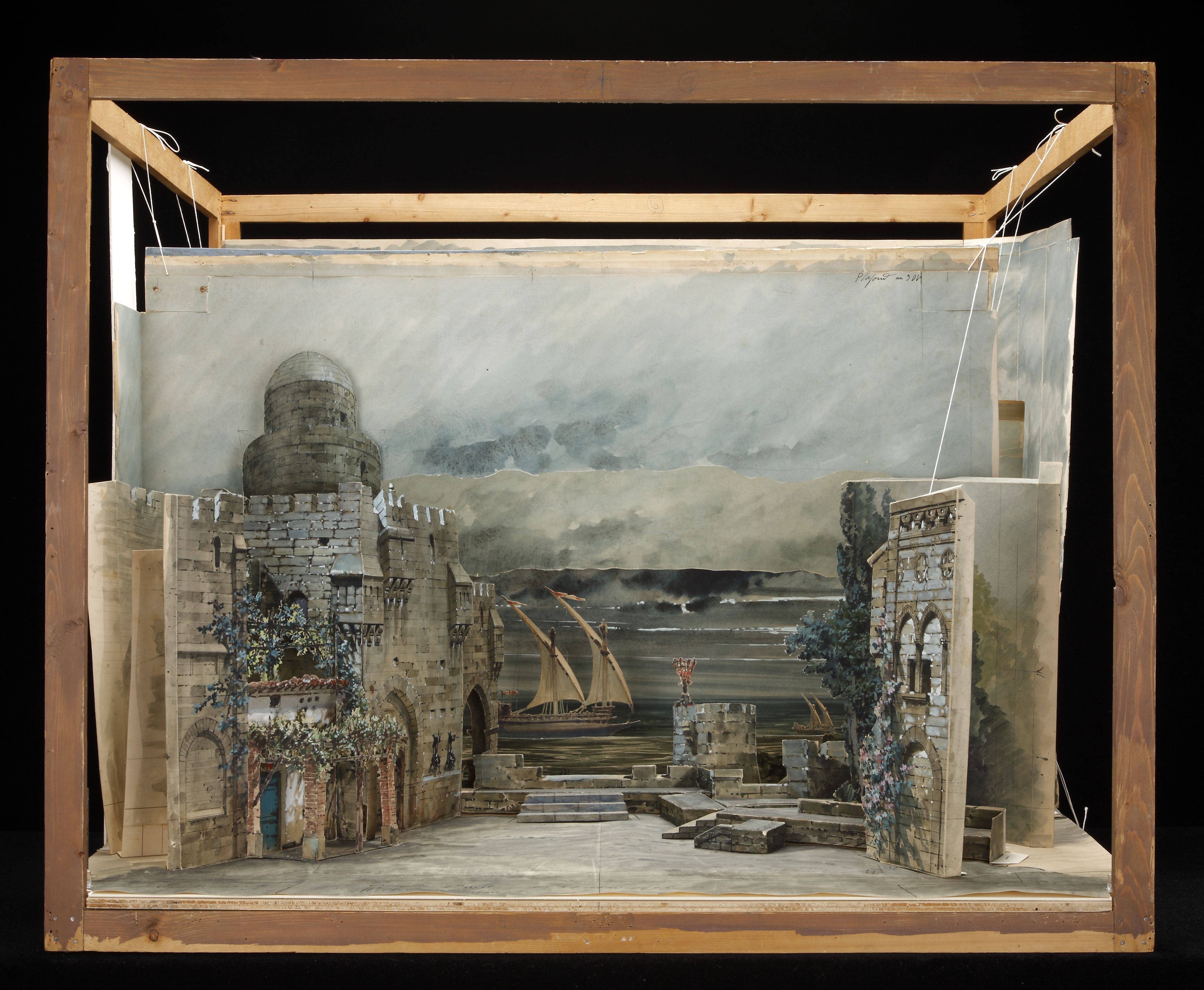|
Lincoln's Inn Fields (theatre)
Lisle's Tennis Court was a building off Portugal Street in Lincoln's Inn Fields in London. Originally built as a real tennis court, it was used as a playhouse during two periods, 1661–1674 and 1695–1705. During the early period, the theatre was called Lincoln's Inn Fields Playhouse, also known as The Duke's Playhouse, The New Theatre or The Opera. The building was demolished and replaced by a purpose-built theatre for a third period, 1714–1728. The tennis court theatre was the first public playhouse in London to feature the moveable scenery that would become a standard feature of Restoration theatres. Historical background The period beginning in England in 1642 and lasting until 1660 is known as the Interregnum, meaning "between kings." At this time, there was no monarch on the throne, and theatre was against the law. Spanning from 1642 to 1649, the English Civil War occurred. This war was an uprising against the current King of England, King Charles ... [...More Info...] [...Related Items...] OR: [Wikipedia] [Google] [Baidu] |
William Davenant
Sir William Davenant (baptised 3 March 1606 – 7 April 1668), also spelled D'Avenant, was an English poet and playwright. Along with Thomas Killigrew, Davenant was one of the rare figures in English Renaissance theatre whose career spanned both the Caroline and Restoration eras and who was active both before and after the English Civil War and during the Interregnum. Biography Early life Davenant is believed to have been born in late February, 1606 in Oxford, the son of Jane Shepherd Davenant and John Davenant, proprietor of the Crown Tavern (or Crown Inn) and Mayor of Oxford. He was baptised on 3 March, his godfather sometimes being said to have been William Shakespeare, who, according to John Aubrey, had stayed frequently at the Crown during his travels between London and Stratford-upon-Avon.Edmond, M., ''Yeomen, Citizens, Gentlemen, and Players: The Burbages and Their Connections'', R. B. Parker (ed), ''Elizabethan Theater: Essays in Honor of S. Schoenbaum'', University o ... [...More Info...] [...Related Items...] OR: [Wikipedia] [Google] [Baidu] |
Cockpit Theatre
The Cockpit was a theatre in London, operating from 1616 to around 1665. It was the first theatre to be located near Drury Lane. After damage in 1617, it was named The Phoenix. History The original building was an actual cockpit; that is, a staging area for cockfights. Most likely a round building with a peaked roof, about in diameter, it was erected under Henry VIII, c. 1530-32, as part of a gaming complex. Records indicate a major restoration in 1581-82 and renovations in 1589-90, 1602-3, and 1608-9 (the latter under the supervision of John Best, "cockmaster" to Henry Frederick, Prince of Wales, King James I of England, James I's eldest son and heir). In August 1616, Christopher Beeston acquired the lease to the building and converted it to an indoor playhouse. In March 1617, rioting apprentices attempted to destroy the playhouse, probably out of anger that their favorite plays had been removed from the Red Bull outdoor amphitheater, which charged only one penny for admissio ... [...More Info...] [...Related Items...] OR: [Wikipedia] [Google] [Baidu] |
Twelfth Night
''Twelfth Night'', or ''What You Will'' is a romantic comedy by William Shakespeare, believed to have been written around 1601–1602 as a Twelfth Night's entertainment for the close of the Christmas season. The play centres on the twins Viola and Sebastian, who are separated in a shipwreck. Viola (who is disguised as Cesario) falls in love with the Duke Orsino, who in turn is in love with Countess Olivia. Upon meeting Viola, Countess Olivia falls in love with her thinking she is a man. The play expanded on the musical interludes and riotous disorder expected of the occasion, with plot elements drawn from the short story "Of Apollonius and Silla" by Barnabe Rich, based on a story by Matteo Bandello. The first recorded public performance was on 2 February 1602, at Candlemas, the formal end of Christmastide in the year's calendar. The play was not published until its inclusion in the 1623 First Folio. Characters * Viola – a shipwrecked young woman who disguises herself a ... [...More Info...] [...Related Items...] OR: [Wikipedia] [Google] [Baidu] |
Hamlet
''The Tragedy of Hamlet, Prince of Denmark'', often shortened to ''Hamlet'' (), is a tragedy written by William Shakespeare sometime between 1599 and 1601. It is Shakespeare's longest play, with 29,551 words. Set in Denmark, the play depicts Prince Hamlet and his attempts to exact revenge against his uncle, Claudius, who has murdered Hamlet's father in order to seize his throne and marry Hamlet's mother. ''Hamlet'' is considered among the "most powerful and influential tragedies in the English language", with a story capable of "seemingly endless retelling and adaptation by others". There are many works that have been pointed to as possible sources for Shakespeare's play—from ancient Greek tragedies to Elizabethan plays. The editors of the Arden Shakespeare question the idea of "source hunting", pointing out that it presupposes that authors always require ideas from other works for their own, and suggests that no author can have an original idea or be an originator. When ... [...More Info...] [...Related Items...] OR: [Wikipedia] [Google] [Baidu] |
Roscius Anglicanus
John Downes (died c. 1712) worked as a prompter at the Duke's Company, and later the United Company, for most of the Restoration period 1660–1700. His "historical review of the stage", ''Roscius Anglicanus'' (1708), is an invaluable source for historians both of Restoration and of Stuart theater. Downes first enters the theatrical record in 1664, when he was registered by the Lord Chamberlain as a member of William Davenant's troupe under the patronage of the Duke of York. By his own admission, stage fright kept him from an acting career, although he is known to have played Haly in ''The Siege of Rhodes''. Later in the 1660s, he is recorded as a member of Thomas Betterton's King's Company; his main work seems to have been as prompter. He continued in this function when the two companies united in 1682; when the companies split in 1694, he remained with Betterton until the middle of the next decade. He is the subject of a number of the ''Tatler''; in this letter from Downes (pres ... [...More Info...] [...Related Items...] OR: [Wikipedia] [Google] [Baidu] |
John Downes (17th-century Prompter)
John Downes (died c. 1712) worked as a Prompter (theatre), prompter at the Duke's Company, and later the United Company, for most of the English Restoration, Restoration period 1660–1700. His "historical review of the stage", ''Roscius Anglicanus'' (1708 in literature, 1708), is an invaluable source for historians both of Restoration and of Stuart period (England), Stuart theater. Downes first enters the theatrical record in 1664, when he was registered by the Lord Chamberlain as a member of William Davenant's troupe under the patronage of the James II of England, Duke of York. By his own admission, stage fright kept him from an acting career, although he is known to have played Haly in ''The Siege of Rhodes''. Later in the 1660s, he is recorded as a member of Thomas Betterton's King's Company; his main work seems to have been as prompter. He continued in this function when the two companies united in 1682; when the companies split in 1694, he remained with Betterton until the mid ... [...More Info...] [...Related Items...] OR: [Wikipedia] [Google] [Baidu] |
Samuel Pepys
Samuel Pepys (; 23 February 1633 – 26 May 1703) was an English diarist and naval administrator. He served as administrator of the Royal Navy and Member of Parliament and is most famous for the diary he kept for a decade. Pepys had no maritime experience, but he rose to be the Chief Secretary to the Admiralty under both King Charles II and King James II through patronage, diligence, and his talent for administration. His influence and reforms at the Admiralty were important in the early professionalisation of the Royal Navy. The detailed private diary that Pepys kept from 1660 until 1669 was first published in the 19th century and is one of the most important primary sources for the English Restoration period. It provides a combination of personal revelation and eyewitness accounts of great events, such as the Great Plague of London, the Second Dutch War, and the Great Fire of London. Early life Pepys was born in Salisbury Court, Fleet Street, London, on 23 Februar ... [...More Info...] [...Related Items...] OR: [Wikipedia] [Google] [Baidu] |
Elizabeth Of Bohemia
Elizabeth Stuart (19 August 159613 February 1662) was Electress of the Palatinate and briefly Queen of Bohemia as the wife of Frederick V of the Palatinate. Since her husband's reign in Bohemia lasted for just one winter, she is called the Winter Queen. Elizabeth was the second child and eldest daughter of James VI and I, King of Scotland, England, and Ireland, and his wife, Anne of Denmark. With the demise of Anne, Queen of Great Britain, the last Stuart monarch in 1714, Elizabeth's grandson by her daughter Sophia of Hanover succeeded to the British throne as George I, initiating the House of Hanover. Early life Elizabeth was born at Dunfermline Palace, Fife, on 19 August 1596 at 2 o'clock in the morning. M. Barbieri, ''Descriptive and Historical Gazetteer of the Counties of Fife, Kinross, and Clackmannan'' (1857)p. 157 “ELIZABETH STUART.-Calderwood, after referring to a tumult in Edinburgh, says, that shortly before these events, the Queen (of James VI.) was delivered ... [...More Info...] [...Related Items...] OR: [Wikipedia] [Google] [Baidu] |
The Siege Of Rhodes
''The Siege of Rhodes'' is an opera written to a text by the impresario William Davenant. The score is by five composers, the vocal music by Henry Lawes, Matthew Locke, and Captain Henry Cooke, and the instrumental music by Charles Coleman and George Hudson. It is considered to be the first English opera. Special permit Part 1 of ''The Siege of Rhodes'' was first performed in a small private theatre constructed at Davenant's home, Rutland House, in 1656. Special permission had to be obtained from the Puritan government of Oliver Cromwell, as dramatic performances were outlawed and all public theatres closed. Davenant managed to obtain this by calling the production "recitative music", music being still permissible within the law. When published in 1656, it was under the equivocating title ''The siege of Rhodes made a representation by the art of prospective in scenes, and the story sung in recitative musick, at the back part of Rutland-House in the upper end of Aldersgate-Street ... [...More Info...] [...Related Items...] OR: [Wikipedia] [Google] [Baidu] |
Stage (theatre)
In theatre and performing arts, the stage (sometimes referred to as the deck in stagecraft) is a designated space for the performance of productions. The stage serves as a space for actors or performers and a focal point (the screen in cinema theaters) for the audience. As an architectural feature, the stage may consist of a platform (often raised) or series of platforms. In some cases, these may be temporary or adjustable but in theaters and other buildings devoted to such productions, the stage is often a permanent feature. There are several types of stages that vary as to the usage and the relation of the audience to them. The most common form found in the West is the proscenium stage. In this type, the audience is located on one side of the stage with the remaining sides hidden and used by the performers and technicians. Thrust stages may be similar to proscenium stages but with a platform or performance area that extends into the audience space so that the audience ... [...More Info...] [...Related Items...] OR: [Wikipedia] [Google] [Baidu] |
Proscenium Arch
A proscenium ( grc-gre, προσκήνιον, ) is the metaphorical vertical plane of space in a theatre, usually surrounded on the top and sides by a physical proscenium arch (whether or not truly "arched") and on the bottom by the stage floor itself, which serves as the frame into which the audience observes from a more or less unified angle the events taking place upon the stage during a theatrical performance. The concept of the fourth wall of the theatre stage space that faces the audience is essentially the same. It can be considered as a social construct which divides the actors and their stage-world from the audience which has come to witness it. But since the curtain usually comes down just behind the proscenium arch, it has a physical reality when the curtain is down, hiding the stage from view. The same plane also includes the drop, in traditional theatres of modern times, from the stage level to the "stalls" level of the audience, which was the original meaning of t ... [...More Info...] [...Related Items...] OR: [Wikipedia] [Google] [Baidu] |
Theatrical Scenery
Theatrical scenery is that which is used as a setting for a theatrical production. Scenery may be just about anything, from a single chair to an elaborately re-created street, no matter how large or how small, whether the item was custom-made or is the genuine item, appropriated for theatrical use. History The history of theatrical scenery is as old as the theatre itself, and just as obtuse and tradition bound. What we tend to think of as 'traditional scenery', i.e. two-dimensional canvas-covered 'flats' painted to resemble a three-dimensional surface or vista, is a relatively recent innovation and a significant departure from the more ancient forms of theatrical expression, which tended to rely less on the actual representation of space senerial and more on the conveyance of action and mood. By the Shakespearean era, the occasional painted backdrop or theatrical prop was in evidence, but the show itself was written so as not to rely on such items to convey itself to the audience. ... [...More Info...] [...Related Items...] OR: [Wikipedia] [Google] [Baidu] |



_-_Scene_from_'Twelfth_Night'_('Malvolio_and_the_Countess')_-_N00423_-_National_Gallery.jpg)




.jpg)

